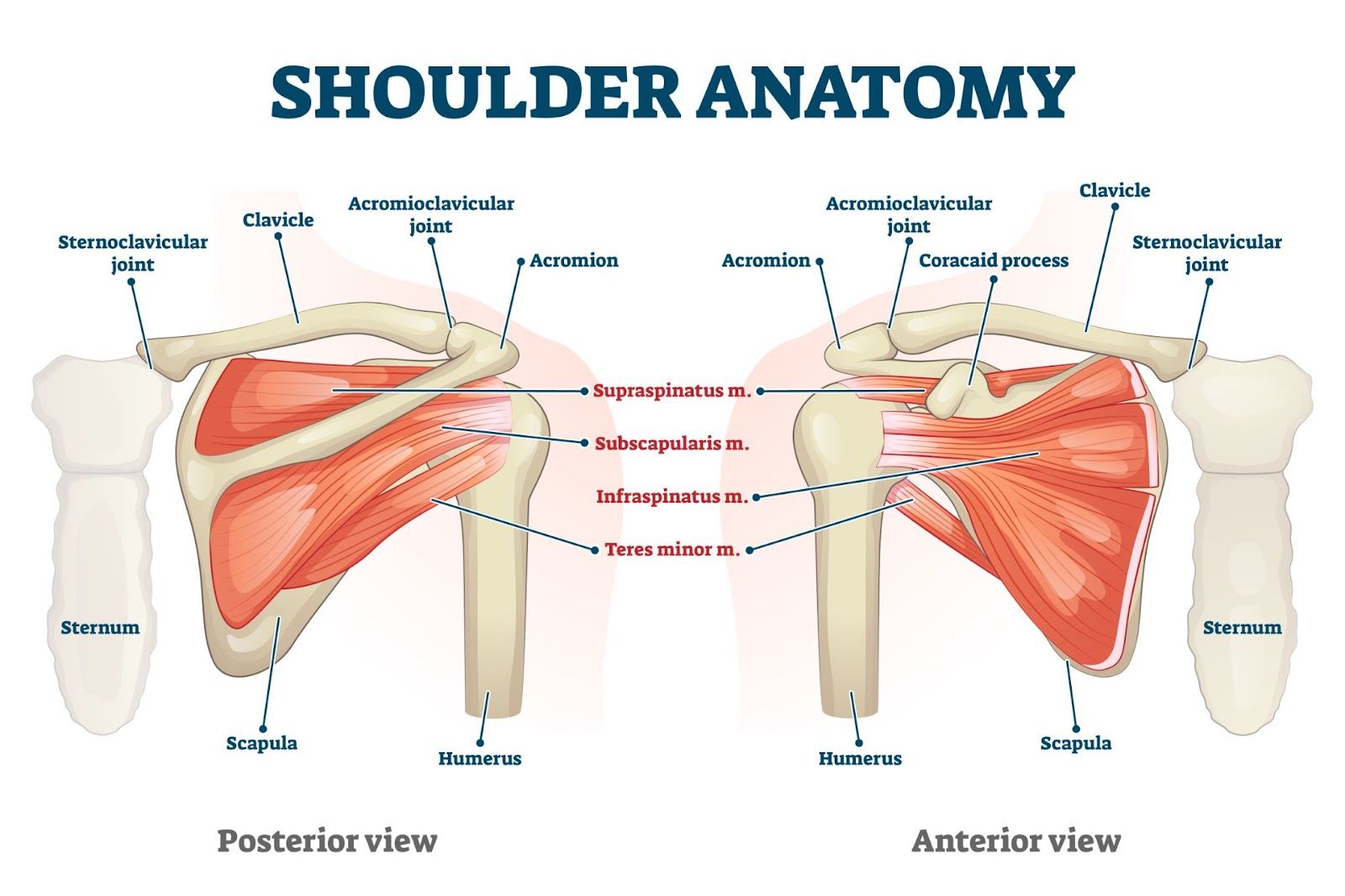8 Solutions to Shoulder Pain From Sleeping on Your Side
Key Takeaways:
- Side Sleeping & Shoulder Pain: Side sleeping, though common, can cause shoulder pain due to pressure on the rotator cuff and poor spinal alignment.
- Main Causes: Pressure on the shoulder, poor spinal alignment, muscle tension, and unsuitable pillows contribute to shoulder pain. Existing conditions like rotator cuff injuries or bursitis can worsen with side sleeping.
- Eight Solutions for Relief: Use proper pillows, correct sleeping posture, stretch before bed, invest in a medium-soft mattress, improve daytime posture, strengthen shoulder muscles, consult a doctor if pain persists.
- LUMINAS Patches: Our natural, fast-acting patches provide drug-free, long-lasting relief for shoulder pain, making them a practical, non-invasive option for side sleepers.
Sleep is supposed to be a time of rest and rejuvenation, but for many side sleepers, it can be a literal pain in the shoulder. You're not alone if you've ever woken up with a stiff, aching shoulder. In fact, side sleeping is the most popular sleeping position, with many of us instinctively curling up on our sides as we drift off to dreamland.
However, while popular, this position might be causing more harm than good.
So, what's a side sleeper to do? Fret not because we've got your back (and your shoulder). We'll share eight practical solutions to help you kiss that nagging shoulder pain goodbye. From simple tweaks to your sleeping posture to proven natural products like LUMINAS Pain Relief Patches, we've got a whole box of remedies for you to try.
Whether you're a lifelong side sleeper or someone who's recently developed a shoulder twinge, these solutions are designed to help you reclaim those peaceful, pain-free nights waking up feeling refreshed.
Anatomy of the Shoulder

Before we point fingers at our pillows or mattresses, let's take a quick tour of the shoulder. Your shoulder is a complex neighborhood of bones, muscles, and tendons working together in (mostly) perfect harmony.
To begin, there's the shoulder joint, where the head of your upper arm bone (humerus) nestles into a shallow socket in your shoulder blade (scapula). It's like a golf ball on a tee, which explains why your shoulder can move in so many directions - and also why it's prone to trouble.
Surrounding this joint is the rotator cuff, a group of four muscles and their tendons that form a 'cuff' around the head of the humerus. They keep your arm bone centered in its socket and allow you to lift and rotate your arm.
Then there's the bursa, tiny fluid-filled sacs that act like cushions. Their role is to reduce friction between bones, tendons, and muscles for smooth shoulder movement.
When you spend hours on your side, this whole area feels the pressure.
Reasons for Shoulder Pain From Sleeping on Your Side
You've settled into your favorite position, curled up on your side, ready for a good night's sleep. But come morning, your shoulder is singing the blues. What gives? Let's pull back the covers on this common problem and see why your go-to sleep position might be giving your shoulder grief.
Pressure on the Rotator Cuff
The primary issue for side sleepers is the constant pressure on the shoulder. When you sleep on your side, your body weight compresses the shoulder against the mattress, putting stress on the rotator cuff. This group of tendons and muscles doesn't fare well under prolonged pressure.
This compression can lead to what medical professionals term "shoulder impingement." In this condition, the rotator cuff tendons become pinched between the upper arm bone and the top of the shoulder blade. Over time, this nightly stress can result in inflammation, reduced blood flow, and discomfort.
Poor Spinal Alignment
When your spine is out of whack during sleep, your shoulder pays the price. Without adequate support, your spine may twist or curve unnaturally. This misalignment can cause your upper body, including your shoulder, to be positioned awkwardly throughout the night. As a result, muscles and tendons in the shoulder area may become strained or stretched beyond their normal range.
Poor spinal alignment can result in one shoulder hunching or lifting higher than the other, creating an imbalance that puts extra stress on the joint and surrounding tissues. Over time, this nightly misalignment can contribute to chronic shoulder pain.
Muscle Tension and Stiffness
When you sleep on your side, especially with your arm tucked under your pillow or body, your shoulder muscles don't get the message to relax.
These muscles stay contracted throughout the night. This prolonged tension can lead to knots, trigger points, and a general feeling of stiffness in the morning.
This constant tension can restrict blood flow to the area, depriving your shoulder tissues of the oxygen and nutrients they need to repair and recover. The result? A cranky and stiff shoulder when you wake up in the morning.
Use of an Unsuitable Pillow
Your pillow can be your shoulder's best friend during sleep – or its worst enemy.
A pillow that's too high can push your head up, throwing your neck and shoulder alignment out of whack. Too low? Your head droops, putting extra strain on those shoulder muscles. And let's not even get started on pillows that are as flat as pancakes or excessively fluffy – neither extreme does your shoulder any favors.
The wrong pillow can force your shoulder to hunch up towards your ear all night. This awkward position can lead to pinched nerves, strained muscles, and a shoulder that's more than ready to complain in the morning.
We will revisit pillows and how to choose the right one for your shoulder later in this article.
Underlying Conditions
Existing shoulder injuries can turn side sleeping from a minor inconvenience into a major pain.
Rotator cuff injuries, for instance. Recent research studies have revealed that 52 out of 58 individuals with rotator cuff tears – were found to be side sleepers.
These tears or strains are irritating on a good day but especially problematic when you put pressure on them. Side sleeping can aggravate a rotator cuff injury, turning that dull ache into a sharp pain that wakes you up faster than your alarm clock.
Then there's shoulder bursitis, the inflammation of those tiny fluid-filled sacs (bursae) that cushion your joints. When these are inflamed, side sleeping can feel like you're resting on a bed of pebbles. Your poor bursa, already irritated, has to deal with the extra pressure all night long.
These conditions don't play nice with side sleeping, often leading to a vicious cycle of pain, poor sleep, and slower recovery.
Best Solutions to Tackle Shoulder Pain from Sleeping

So, here's what you've been waiting for: our 8 solutions to relieve shoulder pain. You don't need to implement all of these at once. Mixing and matching a few strategies can often yield great improvements.
For instance, combining a new, properly supportive pillow with LUMINAS Pain Relief Patches and a few simple stretches might be all you need to wake up pain-free. Experiment with different combinations to find what works best.
1. Use the Correct Pillow
We said we would discuss pillows, and that's where we'll start.
When selecting a pillow to support your neck and shoulders, consider these options:
- Contour Pillows - These ergonomic pillows have a lower curve for back sleepers and a higher curve for side sleepers.
- Cervical Pillows - These pillows feature a depression in the center for your head and elevated sides to support your neck, promoting proper spinal alignment.
- Adjustable Pillows - These allow you to add or remove filling to achieve the perfect height for you.
2. Correct Your Sleeping Posture
The goal here is to keep your spine neutral. Imagine a straight line from your ears through your shoulders to your hips. Keep your bottom arm in front of you, not tucked under your pillow where it can get compressed. A pillow between your knees can help align your hips, which in turn supports proper shoulder positioning.
If you find yourself rolling onto your stomach, try placing a body pillow along your back for support. It might feel strange at first, but stick with it. Your shoulders will thank you for the effort, and soon enough, this new posture will become second nature.
3. Use LUMINAS Pain Relief Patches
For those seeking a non-invasive, drug-free solution to shoulder pain, LUMINAS Pain Relief Patches offers a unique approach. These all-natural patches harness the power of electroceutical technology to provide targeted relief.
LUMINAS patches work by capturing electron signatures from natural anti-inflammatories. When applied to your sore shoulder, they interact with your body's bioelectric field, promoting electron flow directly into the affected area. This process helps reduce inflammation and alleviate pain at its source.
What sets LUMINAS apart is its fast-acting and long-lasting relief. Clinically proven to start working in as little as 15 minutes, these patches can provide comfort for up to 24 hours - significantly longer than many over-the-counter options. Plus, they're easy to apply: just peel and stick before bed and wake up to a happier shoulder.
Whether you're dealing with acute discomfort or chronic shoulder issues from side sleeping, LUMINAS patches replace oral medications or messy creams.
Try LUMINAS Shoulder Pain Relief Patches Here4. Stretch Before Bed
Don't underestimate the power of a good stretch before you hit the hay. A few minutes of gentle shoulder and neck stretches can work wonders for your sleep quality and shoulder health.
Here are a few simple stretches to try:
- Shoulder rolls - Roll your shoulders forward and backward in slow, deliberate circles.
- Neck tilts - Gently tilt your head from side to side, holding each position for a few seconds.
- Arm-cross-chest stretch - Bring one arm across your chest and use the other to gently pull it closer.
Remember, it's all about gentle movement. You're preparing for sleep, not training for the Olympics!
5. Invest in the Right Mattress
We're not suggesting for one moment to splurge on the most expensive option; it's about finding the right balance of support and comfort for your situation.
For firmness, side sleepers generally benefit from a medium to medium-soft mattress. This allows your shoulder to sink in slightly, maintaining proper spinal alignment. However, if you're on the heavier side, you might need a firmer mattress to prevent excessive sinking.
Memory foam mattresses are often a top choice for side sleepers. They contour to your body, cradling your shoulder and distributing pressure evenly. However, some people find memory foam retains heat or feels too "sinking."
Hybrid mattresses offer a great alternative. They combine the pressure relief of foam with the support and airflow of innerspring, a nice balance of comfort and support that many side sleepers appreciate.
Many companies offer trial periods, so don't be afraid to test out a few options before making your decision.
6. Improve Your Daytime Posture
Your shoulder pain at night might actually start during the day. Poor posture while you're awake can set the stage for discomfort when you sleep. Think of good posture as a 24/7 job for your body – it doesn't clock out when you hit the pillow.
Here are some ergonomic tips for your daily activities:
- At your desk, keep your computer screen at eye level and your keyboard close enough that your elbows can rest at your sides.
- When using your phone, bring it up to eye level instead of hunching over it.
- While driving, adjust your seat so your arms are slightly bent when holding the steering wheel.
You can also try these exercises:
- Wall angels - Stand with your back against a wall and raise your arms like you're doing a snow angel.
- Shoulder blade squeezes - Pull your shoulder blades together, hold for 5 seconds, then release.
- Chin tucks - Gently tuck your chin down and in as if you're trying to make a double chin.
7. Strengthen Your Shoulder Muscles
Prevent shoulder pain by working on your muscles. The goal isn't to bulk up but to create a strong, stable foundation for your shoulders.
Exercises for shoulder stability include:
- Shoulder external rotations - Using a light resistance band, rotate your arm outward while keeping your elbow at your side.
- Wall push-ups - These are gentler on your shoulders than regular push-ups but still effective.
- Plank holds - Great for overall shoulder and core stability.
Incorporating these into a regular routine doesn't mean you need to become a gym rat. Aim for 2-3 sessions a week. Consistency pays dividends – it's better to do a little regularly than to overdo it occasionally.
With time, you'll likely notice less pain at night and improved function in the affected shoulder throughout the day. Now, that's what we call a win-win.
8. Seek Medical Help
Unfortunately, sometimes, whatever adjustments you make to your sleep setup or routine aren't enough, and a trip to a doctor or physical therapist becomes necessary. While it's tempting to tough it out, ignoring persistent shoulder pain can lead to more serious issues down the line.
Here are some signs that indicate it's time to seek professional help:
- Pain that persists for more than a few weeks despite your best efforts
- Sharp or severe pain that wakes you up at night
- Difficulty raising your arm or performing everyday tasks
- Visible swelling or deformity in your shoulder
- Weakness in your arm or hand
- Numbness or tingling sensations radiating down your arm
A healthcare professional can provide a proper diagnosis and recommend targeted treatments.
Wrapping Up
There you have it – eight solid solutions to tackle shoulder pain from side sleeping. Remember, you don't need to invest in a sleep lab to get a good night's rest. Sometimes, it's the little changes that make the biggest difference.
Whether you're upgrading your pillow, perfecting your sleeping posture, or giving those shoulders a much-needed stretch, each action you take is a step toward pain-free slumber. And let's not forget about the power of LUMINAS Pain Relief Patches – your new nighttime ally in the fight against shoulder discomfort.
Speaking of which, why not give your shoulders the VIP treatment they deserve? Say goodbye to morning aches and hello to refreshed, ready-to-tackle-the-day shoulders.
Get your LUMINAS Shoulder Pain Relief Patches Today
Disclaimer
The information provided in this article is for educational purposes only and is not intended to be a substitute for professional medical advice, diagnosis, or treatment. Always seek the advice of your physician or other qualified health provider with any questions you may have regarding a medical condition.









